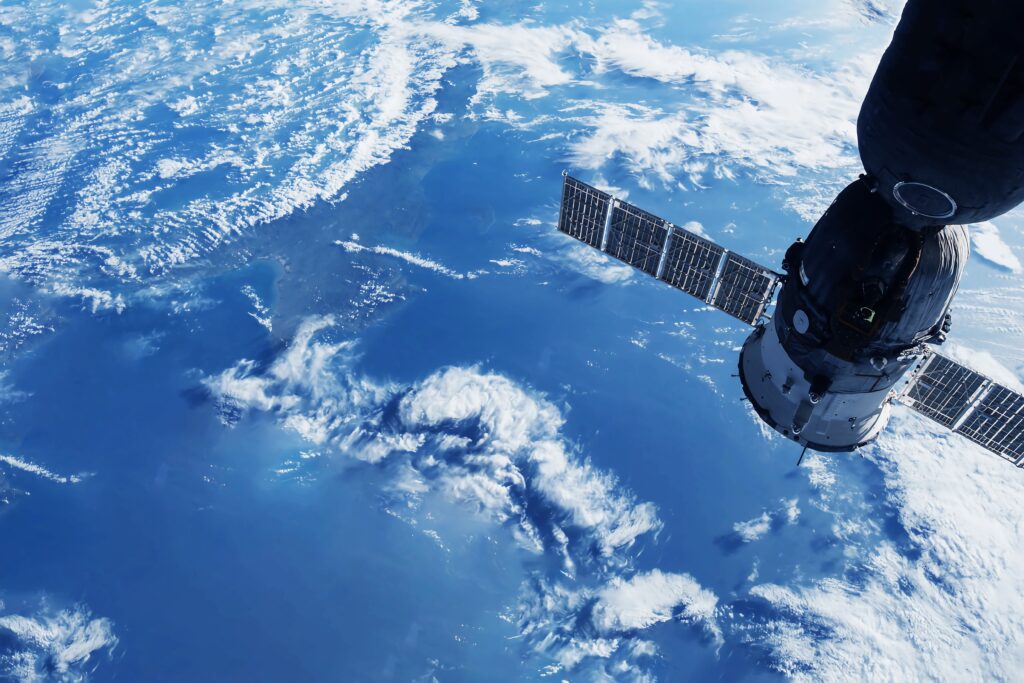A UK-based company, Blue Skies Space, is teaming up with the Italian Space Agency to explore the early universe using the quiet of the moon’s far side. The goal? To listen for faint radio signals from a time before stars even existed—signals that could reveal clues about how the universe first took shape.
This unique mission involves designing a fleet of small satellites that would orbit behind the moon. These satellites will try to catch whispers from the cosmos that are nearly impossible to detect from Earth.
Listening to the Universe’s First Moments
The signals Blue Skies Space hopes to find come from a period less than a million years after the Big Bang. Back then, the universe was mostly filled with hydrogen gas. There were no stars, no galaxies, and no planets. Scientists call this the “cosmic dark ages.”
During that time, hydrogen gas gave off very faint radio waves. These waves sit in the FM radio band—the same range we use for music and talk radio. But on Earth, there’s too much interference from human-made signals. Cell towers, radio stations, and electronics drown out these ancient whispers.
That’s why the far side of the moon is so special. It is the only place in the solar system that’s always turned away from Earth. This keeps it quiet and free from all the noise we make. It is the perfect place to set up radio antennas to study the early universe.
Dr. Marcell Tessenyi, the CEO of Blue Skies Space, said, “We want to peek into those dark ages and learn about large-scale structures of the early universe.”
Small Satellites, Big Mission
The project will study the idea of using CubeSats—tiny satellites that are cheap and easy to build—to pick up those faint signals. These satellites would use parts that are already made and used in other space missions. That means they can be built quickly and at a lower cost.
The mission is starting with a €200,000 study to see if four or more of these CubeSats can do the job. The satellites would fly in a group, or constellation, around the far side of the moon. They would need to be in the right spot and stay there to get clear readings.
One idea is to make this mission part of the European Space Agency’s Moonlight program. This program plans to set up satellites around the moon that will help with both communication and navigation. If the new satellites can tap into this system, they’ll be able to keep their position and send data back to Earth.
A Growing Field of Lunar Science
This effort is part of a bigger push to use the moon for space science. Earlier this year, NASA’s ROLSES-1 radio telescope became the first radio telescope to work on the moon. It was sent by the Odysseus lander, which had a rough landing, but the telescope survived and is still working.
More is on the way. NASA and the U.S. Department of Energy are planning to launch a new mission called LuSEE-Night later this year. This telescope will also head to the moon’s far side. It will try to do what Earth-based telescopes can’t—listen to the quiet radio hum from the early universe.
In the future, scientists hope to go even bigger. One plan is to build a huge telescope inside a crater on the moon. Robots would lay down a large mesh dish to catch even more signals from deep space.
Why This Mission Matters
Studying the early universe helps scientists understand how everything began. It can reveal how the first atoms clumped together to form stars and galaxies. It also tells us how the universe changed over time.
The problem is that most of these signals are blocked or drowned out on Earth. By using the moon’s far side, researchers can finally get a clear signal. This could unlock new information about the universe’s hidden past.
The Blue Skies Space and Italian Space Agency partnership is one of the first major steps toward making this happen. If the early tests go well, the full mission could launch in just a few years.
The moon is more than a place for landers and flags. It’s becoming a new home for science. As space agencies and private companies work together, we’re learning how to use the moon in ways we once only imagined. This new project shows how even small satellites, when placed in the right spot, can help answer some of the universe’s biggest questions.


